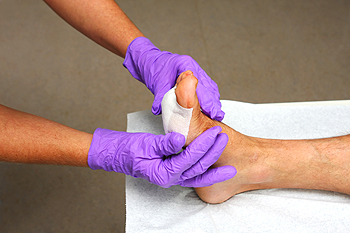
The term “trauma” might not be immediately intuitive for many patients. In everyday usage, this term can refer to emotional damage. However, in the field of podiatry, it means something entirely different. Trauma, or blunt force trauma, is essentially some kind of direct force applied to the foot. This force can be the result of having someone step onto your foot or some other kind of direct blow. If the force impacts the muscles, then it is a possibility that you might experience a foot contusion as a result of the blunt force trauma. This could lead to pain in the foot or even swelling in some cases. If you are interested in learning more about trauma in the feet and what can be done to prevent it, it is suggested that you contact a podiatrist today for more information. This foot specialist will be able to answer any questions you might have and provide treatment.
Foot and ankle trauma is common among athletes and the elderly. If you have concerns that you may have experienced trauma to the foot and ankle, consult with one of our podiatrists from Biebel & DeCotiis Podiatry Associates. Our doctors will assess your condition and provide you with quality foot and ankle treatment.
Foot and ankle trauma cover a range of injuries all over the foot; common injuries include:
- Broken bones
- Muscle strains
- Injuries to the tendons and ligaments
- Stress fractures
Symptoms
Symptoms of foot and ankle injuries vary depending on the injury, but more common ones include:
- Bruising
- Inflammation/ Swelling
- Pain
Diagnosis
To properly diagnose the exact type of injury, podiatrists will conduct a number of different tests. Some of these include sensation and visual tests, X-rays, and MRIs. Medical and family histories will also be taken into account.
Treatment
Once the injury has been diagnosed, the podiatrist can than offer the best treatment options for you. In less severe cases, rest and keeping pressure off the foot may be all that’s necessary. Orthotics, such as a specially made shoes, or immobilization devices, like splints or casts, may be deemed necessary. Finally, if the injury is severe enough, surgery may be necessary.
If you have any questions, please feel free to contact one of our offices located in Holmdel and Middletown, NJ . We offer the newest diagnostic and treatment technologies for all your foot care needs.




